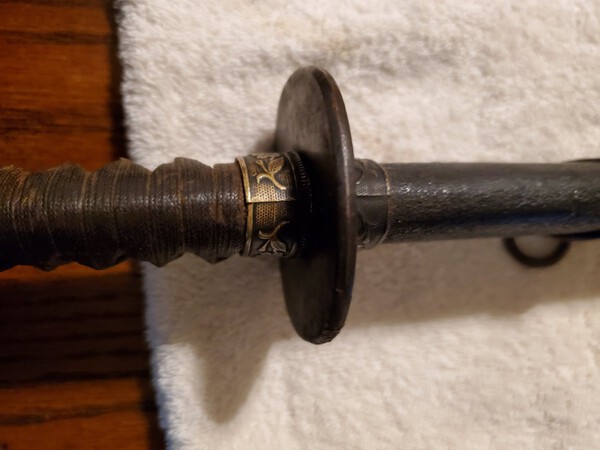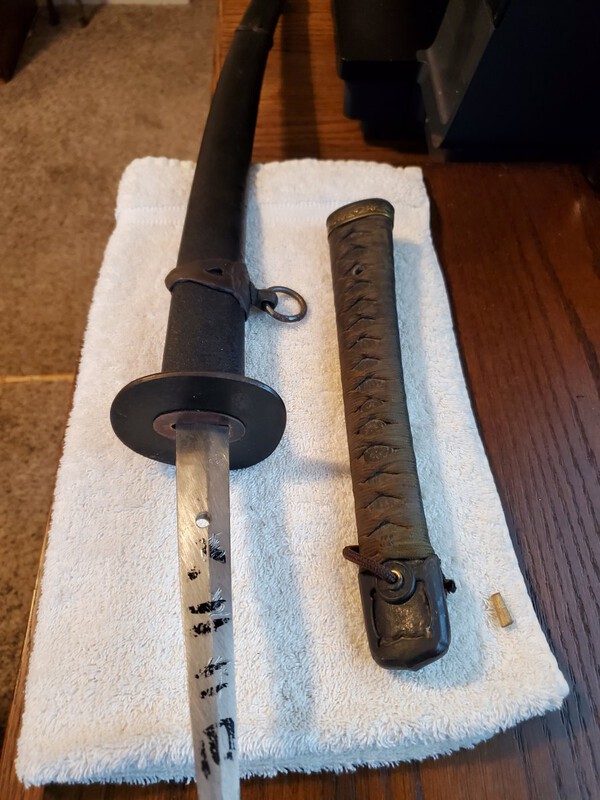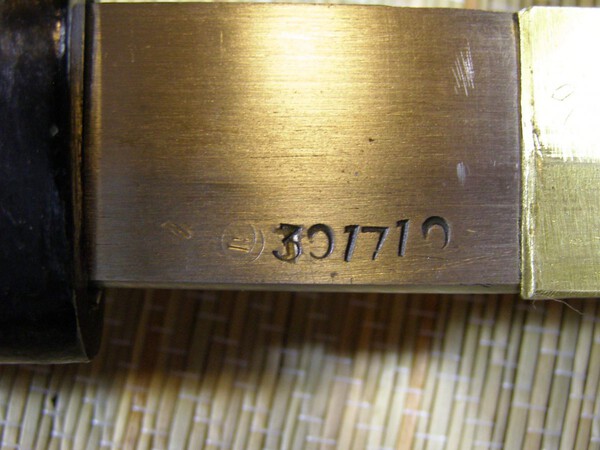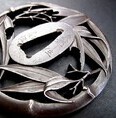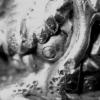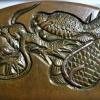Leaderboard
Popular Content
Showing content with the highest reputation on 08/07/2020 in all areas
-
I would describe it as a short Katana. I know the convention about anything under 24 inches being a Wakizashi, but original Edo/samurai era rules were clear that Wakizashi for Samurai could only be 20 inches in blade length, later amended to 18 inches, and a commoners Wakizashi could be no more 14 inches long. Samurai katana could not be more than 28 inches long. You can even see this in surviving wakizashi that show evidence of post manufacture reduction in length to fit the new regulations. 22 inches was within regulation length for a new made Shin-Gunto, and old blades down to 21'5 were acceptable in the sword buying programme of 1942. I strongly suspect that the modern convention is the result of post war Japanese authorities redefining sword lengths to save blades from the occupation destruction programme.2 points
-
2 points
-
Mike, The sword looks fine, but I really envy you the koshirae. I've been collecting fittings with the peach theme -- not very common, and as you likely know an attribute of Seiobo, Queen Mother pf the West, in whose garden grew the peach tree of immortality. I have tsuba, kozuka, kogai, and menuki, but I've never seen a fuchi-kashira with this theme, until now. Very rare. Congratulations. Les2 points
-
This may be a good first study piece. Mike, as it's part of your family history. But, from what's visible, it's not a collector's item. The early Kamakura blades have been around for nearly 1,000 years, some of them looking like they were forged yesterday. And please be aware that Adam's identification is based solely on the mei. Considering that the vast majority of signed blades are gimei (fake), take a long, hard look at the blade's other features, to see if they support his finding. But, the only way to be more certain of its provenance is to send it to shinsa, where you will get their opinion, & possibly authentication papers.2 points
-
Never ruin a good story for the sake of the truth! So I did some more research and I found some letters my grandfather wrote home. Not I have direct evidence on how he acquired the sword. Turns out he bought it off of some guy in Tokyo. Here is a link to the letter: https://www.dropbox.com/s/8as6dj9fep0nba8/Sword_Letter.PDF?dl=02 points
-
All Guys and Gals, Sword Freaks and Geeks - Please send out good thoughts, vibes, wishes, etc. today for good success with Brian's surgery. Hope he has a successful surgery and pain relief with quick recovery. Rich1 point
-
Bishamonten is the god of warriors and punisher of evildoers. He is one of the shichifukujin (Seven Gods of Fortune) and is often portrayed with a yari or baton in one hand and a Stupa (a small pagoda which represents the treasure house that he guards) in the other hand. Japanese artists sometimes humorously depict Bishamon with an Oni (demon) who has stolen his pagoda.1 point
-
1 point
-
1 point
-
I would also recommend Mark Jones. He runs the Chicago show and is always coming up with good pieces. He is honest, his prices are fair and he won't lead you astray.1 point
-
To the best of my knowledge, you treat it as you would any clean nakago. Do nothing apart from normal maintenance. The patina or lack of same is an indication of when the job was done. Repatination is done because some event removed the patina formerly there, faking patination is just that, faking with intent to decieve.1 point
-
1 point
-
1 point
-
You can also find Army versions similar to this. Not Rinji Seishiki, but a plain version of the 98. I have found a few online, usually with the field saya, and variable quality blades. I just saw them as economy versions, but now I see them as late war. I wonder if we can provoke Mr Komiya into finding the documentation.1 point
-
1 point
-
Yes, Dave, that's a good example. No stippling on the kabutogane and haikan (ashi), and blackened. To be in full compliance, there would be no blossoms on the fuchi and koiguchi either, but like you say, they were using what they had at the time. Nice one Dave!1 point
-
1 point
-
Gotcha, thanks Ken. Totally agree Chris, it's an incredible concept in this age of consumerism and wastefulness. And I'd posit that the culture existS, not existED, thanks in part to this forum I guess I just expected everything he (grandpa) brought back would've been wartime-made. All the history behind these is just so interesting - how they get passed down generation to generation, how the soldiers had to buy their own swords (or use the family sword?) I've been reading so much but then I've only been doing so for a month. It's like peeling an onion; layer after layer of amazing things to discover. Thank you all again. More pics of everything to come within a month, I hope!1 point
-
Its not unusual at all that blades are 500 years+ It is truly amazing that such a culture existed that revered and allowed these to survive.1 point
-
There are some very interesting items in there, BUT!!!, keep in mind the 25% buyers premium added on to your final bid price. Then you must arrange shipping on top of that...on an item with just a few generic pics.1 point
-
Bruce, I somehow missed your original post back Dec. 2019. However, after reading it today, I realized one of my sword may be similar to the type you were requesting to see. I believe there must have been somewhat of a transition period after the March 1945 directive regarding the Kai-gunto. The swords I own attempts to follow the mandate in the sense it has plain unadorned Kubuto-gane and Ishizuke. The fuchi, koiguchi, ashi and semegane all have sakura blossoms, yet are intentionally painted black, I suspect in order to comply with the directive. Also, one hanger has been eliminated, as well as both rising sun seppa. Some of the black paint on the fuchi is missing due to handling. Dave M.1 point
-
Brian You are going to be stiff and less flexible with two fused disks. Therapy will help with that. I'm surprised they are allowing you to get up/stand at all this soon. As for "Just need to get to the point where typing one post or email isn’t a major event." - then don't do that !! All is fine on NMB, just take care of yourself - all is well here. Sorry you are hurting - it won't last forever (just seems that way). Rich1 point
-
I think this table would look better if collectors could actually see what the symbols and kanji characters actually look like. Visuals aids can go a long way in my opinion.1 point
-
http://www.nihontomessageboard.com/links.html Or you can alternatively go to (Under banner) Pages - Links1 point
-
Other people have said it all. My main contribution is to point out that the last "working owner" of the blade would not have seen it as in any way inferior, in fact as a mount officialy approved of by the (god) Emperor and taken to serve the same, he would have seen it as the swords best ever avatar. On another note, I buy bare blades, usually nihonto and remount them, if I get one in the original saya I am delighted. I use antique tosugo, real Honoki, and Ito imported from Japan, and genuine Same. I even use Washi for hishigame ....... It is still a "replica" set of mounts! When selling on, I am clear to the buyer what he is getting. I have two blades, one a Gunto and one a late Edo Wakizashi in original untouched antique mounts, I have no intention of "improving" them, ever.1 point
-
The tsuba carries part of a saying from a Chinese historical figure, Jiang Ziya 天有時,地有財,能與人共之者、仁也;仁之所在,天下歸之。免人之死、解人之難、救人之患、濟人之急者,德也;德之所在,天下歸之 Heaven has its four seasons and the Earth, its resources. Being capable of sharing these with populace is truly benevolent. Whoever has true benevolence, all under Heaven will pledge allegiance to him. Sparing the people from death, eliminating hardships, relieving misfortunes, saving people from dangers, these are virtues. Whoever has true virtues, all under Heaven will pledge allegiance to him https://en.wikipedia.org/wiki/Jiang_Ziya1 point
-
Hello Adam, I don’t care about the signature in this specific case, look at the workmanship. It’s an eternal question whether you like to buy art or signature/attribution/paper, we already discussed it with you. You already know the answer to your question, why asking, for others to be aware? I’m not hiding anything. I have gimei, mumei, hozon, tokuho and juyo candidate pieces in my collection, and I like gimei to be frank because it’s affordable, if the quality is there. Some just can’t afford a big name, mumei and gimei are here for them if the work is pleasing the eye. Even NBTHK in some rare cases if the workmanship deserves protection may put on a paper “there is a signature”.1 point
-
Bruce and Bazza are of course correct, at least keep the shingunto koshirae for the next owners. Together they are more valuable to collectors, both financially and historically.1 point
-
Breaking news on late-war Type 95 stamps in a circle! Often seen on Jinsen made blades, they are an empty circle, a circle with 1, 2, or 3 horizontal lines inside, and they are Category marks for fitness for combat. The circle with 2 lines is a down-grade, "not for combat use", but can be used for training, schools, etc. Comes from new revelations on Warrelics, here: https://www.warrelics.eu/forum/Japanese-militaria/evolution-Japanese-army-steel-helmet-1918-1945-revised-expanded-version-589930-11/ Here is a blade with the Jinsen "He" and beside it is a circle with 2 lines.1 point
-
Not at all, its because I want the blade that spent the 250 years before WWII back in its samurai mounts. Making a quick buck is not the reason at all.1 point
-
Got another one from this thread: It has standard tsuka hardware, but the roughly made, black painted saya (normally covered by leather). I'd like to add this to the discussion on Warrelics, but cannot find it there. Anyone have the link to that discussion?1 point
-
First of all great work on the new website and integration, virtually no big hiccups and there is a ton of extra features and content to play around with. Second, I agree with Chris, if possible a dark mode or different colour scheme option would be fantastic!1 point
-
Hi Brian, the board is working fine. But for my eyes is it possible to get a more decent color look? This is so white and i think I'm on work. 😀1 point
-
1 point
-
Andrew, thank you for posting that wonderful letter from a most historic moment in time. For me, the story of the sword's acquisition is a million times more fascinating and charming than the original tall tale, and much more precious because your grandfather documented it so eloquently. Coming from the Bay Area myself, I felt a connection hearing him describe the Imperial Palace grounds as being comparable to Golden Gate park. And how funny to hear him initially lament that other soldiers had shinier, newer-looking swords, and that his own looked like a dull "toad-stabber", when in reality the shiny stuff tends to be junk. Interesting also the time of the letter, just months after the end of the war. We get a sense of how close to starvation the country was, when your grandfather describes the scarcity of food in Tokyo. How fascinating it must have been to browse the black markets of Tokyo then. You have a true samurai sword, whose reputation is, in my opinion, enhanced by the letter.1 point
-
See this link to a .pdf documenting what I've done so far. This is more to keep the family updated for the moment, but I will use the information eventually for the display frame.1 point
-
You have no chance of finding the last (Japanese) owner, and frankly on the rare occasion when it has been possible it has not always gone well. Japan has strict laws on swords and treats them as weapons, even antiques need to be judged and licensed, and most Japanese do not like to be reminded about family involvement in WW2. Do not use abrasive paper or abrasive cloth on any part of the sword, give it a wipe down with oil and leave it. If you want to take it further get your hands on some Uchiko powder and rub it down with that. It won't polish the blade, but it should remove loose rust, and you will be doing nothing that had not been done to it in its working life. Have a look for sword care links on this site.1 point
-
Not everyone can show the sword that his grandfather brought from the war .... for you, in theory, it should be an invaluable treasure, a family heirloom. And if you still have photos of your grandfather from the war, then that would be great. And in this case, its historical value is not comparable with the material assessment. Put it in order - if there is such a possibility, no - put oil on the blade and enjoy what you have ...1 point
-
Hi, name please, Here is a short paper on care and maintenance that will show you how to properly handle and protect your sword. http://nbthk-ab.org/cleaning-maintenance.php Nothing has to be done to your sword now; it will be fine if left alone with maybe just a fine coat of oil (as explained in the paper). I don't think you want to go to the expense of a polish unless you plan to become a collector of Japanese swords or, at the very least, until you have learned more about the sword and know how to care for the polish so it isn't messed up shortly after you've paid for it. You should be looking for someone knowledgeable and honest who can see the sword in hand and tell you more about it and please stay from polishers who don't have the proper training (99% of those in the US who claim to know how to polish Japanese swords). Grey1 point
-
1 point
-
I have dealt with Alex before. It was uncomplicated and the items just as described. Nice stuff here with good prices, can only reccommend!1 point
-
With papered mumei blades the attribution is a measure of perceived quality of the blade. I have seen a mumei blade with several papers all going to different smiths but smiths of the same rank (above average but not spectacular). So the attribution may differ but I think that you will see that the level of the smith (quality of work) will be the same.1 point
-
Hi, not an exact science, but if you look at whats left of the sword, you know the era, look at the sori etc, might be able come up with a decent guestimate, Odachi might be tricky though, read some were massive This general guide to blade changes comes in handy sometimes http://www.yamakawadojo.com/the%20japanese%20sword%20historical%20changes%20in%20shape.pdf1 point
-
We must be clear on mumei. There are two kinds of mumei Nihonto: - ubu mumei Nihonto - O suriage mumei Nihonto judgement can change according to the case. If you want an opinion just have a look at NBTHK criteria for different kanteisho levels. Now there are fine ubu mumei swords even in shinshinto but don't expect, even with a NBTHK kanteisho, to have found a diamond in the mud. A signed blade by a given smith shall always be better valued than an unsigned one by the same smith. On a koto sword, a Juyo o suriage mumei Kamakura tachi by a sai jo smith will often be offered at less than half the price of a Juyo signed one.1 point
-
The 62nd newly designated IMPORTANT SWORDS display at the Japanese Sword Museum, has 26 of the finest sword imaginable. 8 are mumei (including a Masamune and a Hein GOJO) and 3 shumei (one is a sadamune) so maybe his standards/opinions are ridiculous high or elitest just my humble, simple and uneducated thought for the week. regards H1 point
-
Ken I'm sure you know your stuff but that picture makes the mei, so tsuba as well, look cast. It's not particularly crisp.0 points
-
All will be added when I am alive again A darker theme too. Don’t panic folks. All in time. Right now I am in a bad state.0 points
-
Ha! I was on the NMB Military Swords forum for YEARS before I even found out there were other forums on NMB! 😳0 points




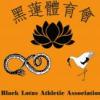

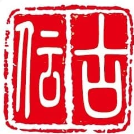





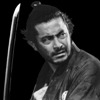
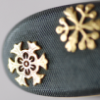


.thumb.jpg.b90ade9e71386874d7db2e8dd66ae349.jpg)
.thumb.jpg.9307f38cf94d46a4fbefcf5b82a05502.jpg)
.jpg.3864d713769ddc7e38ed86238b55db63.jpg)
(2).thumb.jpg.1bb417dc0950cd0248283bbe5f69bf68.jpg)





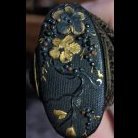
.thumb.jpg.bc10b59027a00aa142dce0349f3ba9e0.jpg)
.thumb.jpg.710ea7ff2c0979d533fbc8a1eed8a526.jpg)


